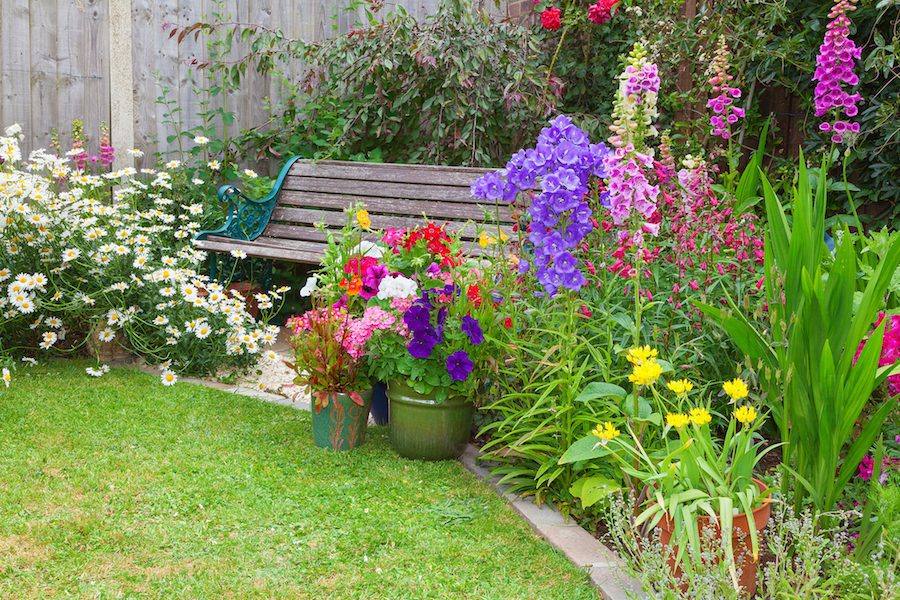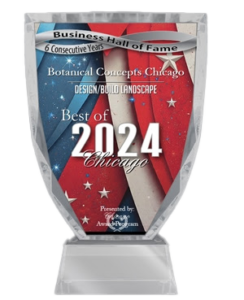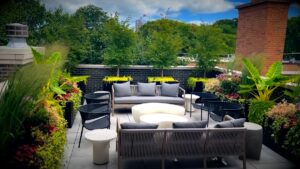One of the best parts of homeownership is decorating your house to suit your unique personal style. The same holds true for your landscaping. The exterior of your home should reflect your personality, but it should also complement the architectural style of your home. An overview of the most popular garden styles will give you a starting point in determining the right look for you.

Traditional Gardens
Paying homage to the garden designs of the past, today’s traditional garden design is a modern version of the classic designs that were common around the lavish palaces, chateaus, and estates of Europe a century ago. The updated version of the traditional garden style includes brick and stone as a way to define various garden “rooms”. Different areas designated for outdoor entertaining, barbecuing, and dining, are separated from family play areas and relaxing areas. Although traditional gardens are known for merging landscape plants with cutting flowers and vegetable plants, the key theme of this garden design is the concept of the garden room.

Contemporary Gardens
Just as contemporary interior design is defined by sleek, clean lines, the contemporary garden is also known for having a streamlined look with a mixture of sophistication and minimalism. One component of the contemporary garden is that the focus shifts from the plants to the architectural materials, such as walkways, retaining walls, and patios. Another aspect of contemporary gardens is the repeated patterns and geometric shapes, such as grid patterns or oversized checkerboard patterns. A contemporary garden appears to be organized, symmetrical, and carefully planned.

English Cottage Gardens
In stark contrast to the structured and organized contemporary garden is the English cottage garden. Romantic, whimsical, and charming, the English cottage garden is a style that dates back to the peasant cottages in rural and working-class English countryside of a century or two ago. English cottage gardens are packed with an abundance of flowering plants, herbs, and edible plants that seem to be arranged in a haphazard fashion, but there is more to it than meets the eye. The lush and fragrant English garden requires the careful upkeep of a dedicated gardener.

Japanese Gardens
Japanese gardens are similar to contemporary gardens is that they are sleek and linear, but there is one notable addition. A key feature of Japanese gardens is water. There can be literal water features, such as ponds, fountains, basins, or waterfalls, or implied water features, such as artistically raked pebbles. Harmony with nature is important in Japanese gardens and the overall goal is to create a tranquil place for relaxation and meditation. Common architectural features of a Japanese garden include bridges, lanterns, and benches.

Minimal Gardens
Another garden style that places more emphasis on simplicity and building materials than on plants, is the minimal garden. Akin to a contemporary garden, with a nod to the Japanese style, the minimal garden is ideal for homeowners who don’t have a lot of time for weeding and tending a garden. Minimal gardens are low-maintenance because the focus is placed on the pavers, stone, and other building materials, rather than the plant life. The simple, open design of the minimal garden makes it the perfect space for outdoor entertaining.

Mediterranean Gardens
To evoke a Mediterranean feel to your garden space, add an abundance of mosaic tiles and terra cotta flowerpots. Fill these pots with brilliantly colored flowers and plant fragrant climbing vines to cascade over arbors or trellises. Another common aspect of the Mediterranean garden is decorated walls. Clay pots or jars attached to a wall add height to the growing space and create a European flare. Accent the Mediterranean garden with an intimate bistro table and a few candles for an exotic and romantic vibe.

Desert Gardens
Desert gardens are uniquely suited to the dry, hot growing conditions. Native plants, such as cactus and succulents, are the best choices for desert gardens because they are drought-tolerant. Accenting the native plants in desert gardens are rocks, boulders, and other hardscapes. The simple design is not as sparse as a minimal or contemporary garden, and often makes use of the unique textures of desert plants to create drama and interest.

Tropical Gardens
As hot as a desert environment but not nearly as dry, the tropical garden is ideal for the southern states that are hot and humid. The tropical garden is lush and exotic, filled with flamboyant blooming flowers and oversized foliage that reminds you of a jungle. Many architectural structures, like walkways, decks, and patios, may absorb and retain the heat of the tropical sun so these garden features need to be modified for the climate. A hallmark of the tropical garden is height…tall growing plants and hanging baskets, all designed to surround you in the tropical feel.


